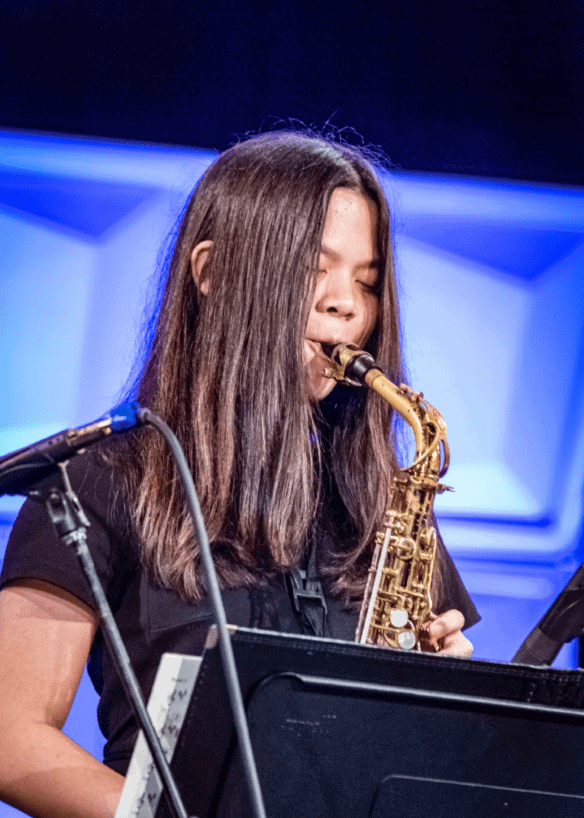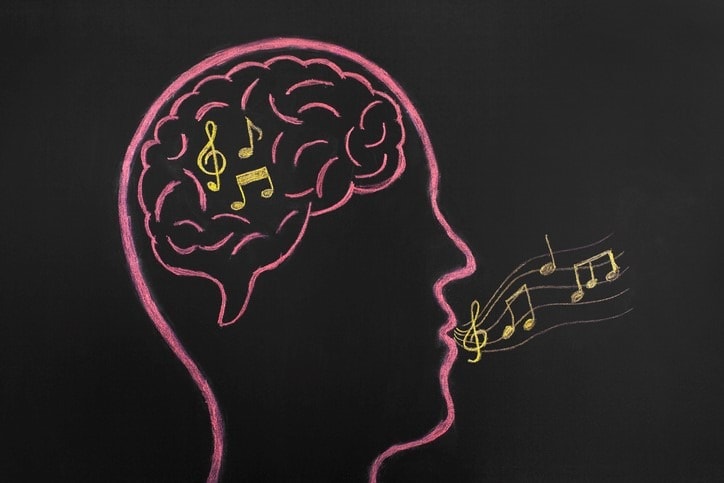/ News Posts / Active Thinking, Not Just Active Doing, in the Ensemble Classroom
Active Thinking, Not Just Active Doing,
in the Ensemble Classroom
By NAfME Member Brian N. Weidner
Brian N. Weidner presented on “Active Thinking (and Active Doing) in Ensemble Classrooms” during the NAfME 2021 PreK–12 Learning Collaborative in February 2021.
Band, choir, and orchestra classrooms easily become spaces where students are physically active but mentally asleep. When the conductor steps on the podium, the students often cede all responsibility for thinking and fall into the lull of following the directions that are given to them. Fortunately, if we are intentional about our actions, ensemble teachers can easily create collaborative ensembles where active student thinking is encouraged and even required.
Modeling and Coaching
Our role as teachers is to provide cognitive apprenticeship for our students where we first model and then coach students through processes of critical thinking (Weidner, 2018). One approach for modeling in the rehearsal is the think aloud, and it is easily brought into the director-centric ensemble. Instead of telling students how to adjust their performance, we explain:
- What we are hearing
- Why we want to change what we hear
- How we will make that change
This simple sequence demonstrates our thought processes to our students, so that they have a clear model of musical critical thinking.
“The more frequently we ask instead of tell, the more actively our students are thinking about the musical experiences they are having and the deeper they move into understanding the music they make.”
Coaching comes into the rehearsal when we move from telling students what to do next to asking them what they hear, why they want to change it, and how to make that change. This process of Socratic questioning reinforces the cognitive skills that were modeled by the teacher and draws students through all of the musical processes (Tutt, 2007). The more frequently we ask instead of tell, the more actively our students are thinking about the musical experiences they are having and the deeper they move into understanding the music they make.
Collaborative Rehearsal Planning
Once critical thinking is a common element of the ensemble, students can make meaningful decisions about the rehearsal. In the traditional model of ensemble rehearsal, the director selects the music, studies the score, and prepares the rehearsal before the students ever join the teacher in the shared rehearsal space, where decisions are typically dominated by the conductor (Morrison & Demorest, 2012). If we want students to become independently capable musicians, we must provide them with opportunities to consequentially impact the music rehearsal by sharing its planning.
Collaborating in the rehearsal starts with the teacher coaching students through the considerations that are made as an ensemble director (Berg, 2008). What do you see? What do you look for that could cause trouble? What do you want to bring out of the music? This leads to the presentation of specific strategies for addressing issues and giving those strategies specific names, so that students know both how and why to chunk, to ta-ka-di-mi, or to simplify the music that they are working on.
Once students have familiarity with common rehearsal tools, they are able to share in the rehearsal planning process. This can happen before class through the use of exit or entrance slips, online discussion boards, or shared Google Docs that ask students to note what they want to work on and how to go about that task. This shared decision-making can also happen in real time. Apps like PopInNow allow for real time crowdsourcing where students can provide immediate feedback on what should happen next in rehearsal. This can also be done through Whack-a-Mole rehearsals, where students physically stand up and stop the rehearsal when they have an observation to make.
Importantly, once we allow students to contribute to the rehearsal, we need to make sure that we follow through on their observations. If students are taking the risk to suggest a new plan of action, we need to honor that plan and support the students’ problem-solving processes.
Positive Failure Experiences
When we ask students to take risks, we are also opening up the possibility that they will fail. But failure does not come in just one flavor—it varies from preventable, negative failure to ambitious, praiseworthy failure (Edmondson, 2011). While we may be tempted to jump in when we see students make the wrong choice, we need to support students in their mistakes and teach specific strategies for coping with failure socially, emotionally, and musically. When students do not succeed, we need to teach them how to diagnose their problems and move past them. This means that we normalize failure by modeling it ourselves, making it visible in the classroom, and providing students multiple opportunities to be successful.
Taking the First Step
If you are new to using your classroom for collaboration, start by re-creating your ensemble as an active thinking space by incorporating modeling of your thinking and asking students guiding questions. Once your students become accustomed to being accountable for critical thinking in the rehearsal, the possibilities for constant cognitive engagement through collaboration are limitless!
References
Berg, M. H. (2008). Promoting “minds-on” chamber music rehearsals. Music Educators Journal, 95(2), 48–55.
Edmondson, A. C. (2011). Strategies for learning from failure. Harvard Business Review, 89(4), 48–55.
Morrison, S. J., & Demorest, S. M. (2012). Once from the top: Reframing the role of the conductor in ensemble teaching. In G. E. McPherson & G. F. Welch (Eds.), The Oxford handbook of music education (Vol. 1, pp. 826–843). Oxford University Press.
Tutt, K. (2007). Using questions to teach the national standards in rehearsal. Music Educators Journal, 93(5), 38–43.
Weidner, B. N. (2018). Achieving greater musical independence in ensembles through cognitive apprenticeship. Music Educators Journal, 104(3), 26–31.
About the author:
 NAfME member Brian N. Weidner is the assistant professor of instrumental music education at Butler University and holds a Ph.D. in Music Education from Northwestern University with additional degrees in music and education from Olivet Nazarene University, Northern Illinois University, and Illinois State University. Previously, he taught at McHenry (IL) High School for 12 years, serving as its Fine Arts Coordinator and Director of Bands.
NAfME member Brian N. Weidner is the assistant professor of instrumental music education at Butler University and holds a Ph.D. in Music Education from Northwestern University with additional degrees in music and education from Olivet Nazarene University, Northern Illinois University, and Illinois State University. Previously, he taught at McHenry (IL) High School for 12 years, serving as its Fine Arts Coordinator and Director of Bands.
He has published articles in the JRME, MEJ, BCRME, JMTE, Psychology of Music, and regional journals and has presented nationally and internationally. He is also the author of Brass Techniques and Pedagogy which incorporates many of these concepts of critical thinking in beginning instrument instruction. His research focuses on the development of independent musicianship through large music ensembles and processes of disruption in music teacher education.
Did this blog spur new ideas for your music program? Share them on Amplify! Interested in reprinting this article? Please review the reprint guidelines.
The National Association for Music Education (NAfME) provides a number of forums for the sharing of information and opinion, including blogs and postings on our website, articles and columns in our magazines and journals, and postings to our Amplify member portal. Unless specifically noted, the views expressed in these media do not necessarily represent the policy or views of the Association, its officers, or its employees.
July 20, 2021. © National Association for Music Education (NAfME.org)
Published Date
July 20, 2021
Category
- Ensembles
Copyright
July 20, 2021. © National Association for Music Education (NAfME.org)







